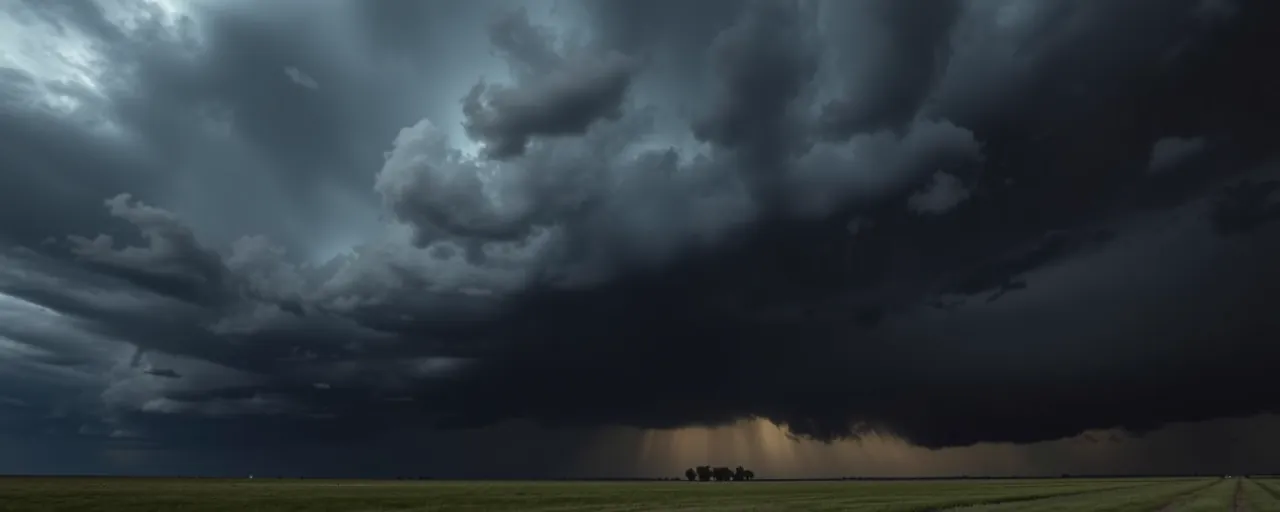A State on Alert
Texas is gearing up for a turbulent week as forecasts predict severe thunderstorms, flash flooding, and possible tornadoes across its northern, central, eastern, and western regions. Governor Greg Abbott has ordered the Texas Division of Emergency Management to deploy swiftwater rescue teams, helicopters, and urban search units to support local responders. The move comes as the National Weather Service warns of large hail, damaging winds, and heavy rainfall that could disrupt communities and infrastructure.
The state’s proactive stance reflects the growing reality of extreme weather events. Residents are urged to monitor local forecasts, prepare emergency kits, and follow guidance from officials. For many Texans, the threat feels all too familiar, with memories of past floods and storms still fresh. Yet the increasing frequency of such events has sparked broader questions about how communities can stay resilient in the face of escalating climate risks.
A Coordinated Response
Texas has mobilized a wide array of resources to tackle the looming weather threats. Specialized teams from the Texas A&M Engineering Extension Service, including swiftwater rescue squads and urban search units, are on standby. The Texas Parks and Wildlife Department has deployed game wardens and rescue boats, while the Department of Public Safety is ready with helicopters and tactical marine units. Road conditions are being monitored by the Texas Department of Transportation, and agricultural support is available through the Texas A&M AgriLife Extension Service.
This multi-agency effort underscores the state’s emphasis on rapid, coordinated action. Local governments, often the first to respond, rely on state support to manage crises that can overwhelm their resources. In recent years, Texas has refined its approach, drawing on lessons from events like Hurricane Harvey in 2017, which caused widespread devastation. The current activation, involving hundreds of responders and equipment, highlights the scale of preparation needed as weather events grow more unpredictable.
Climate Change and Escalating Risks
The storms bearing down on Texas are part of a larger pattern of intensifying weather events across the United States. Scientists point to climate change as a key driver, with rising global temperatures fueling more frequent and severe storms, floods, and hurricanes. In 2024, the U.S. saw 54 billion-dollar disasters, far above the annual average, including Hurricane Helene, which killed over 120 people in the Southeast. Warmer ocean waters and increased atmospheric moisture are making storms more destructive, often with less warning time.
The economic toll is staggering. Last year, natural disasters caused $368 billion in global losses, with the U.S. bearing a significant share. Recovery costs have nearly doubled in the past five years, reaching $153 billion annually. In April 2025 alone, severe weather in the central U.S. caused up to $90 billion in damages. For Texas, a state prone to floods and tornadoes, the financial and social burdens of these events are a growing concern, prompting calls for better preparedness and mitigation.
Debating Responsibility and Resources
As Texas braces for impact, a broader debate is unfolding about who should bear the cost of disaster preparedness and recovery. Some policymakers argue that states and local communities should take the lead, building their own resilience and relying on federal support only for catastrophic events. They emphasize the importance of local knowledge and accountability, advocating for policies that shift more responsibility to state budgets and individual households.
Others contend that the federal government must play a larger role, especially as climate-driven disasters strain state resources. Advocates for robust federal funding highlight that every dollar spent on prevention can save six in recovery costs. They call for investments in infrastructure, renewable energy, and support for vulnerable communities, arguing that only a national approach can address the scale of the challenge. The tension between these views shapes how states like Texas prepare for and recover from increasingly frequent crises.
The Power of Communication
Effective communication is proving vital as Texas prepares for the storms. The National Weather Service, working with state and local agencies, is issuing real-time alerts through media, social platforms, and emergency notification systems. Public education campaigns, including Severe Weather Awareness Weeks, have helped Texans understand the risks and take action. Clear, actionable messages, free of technical jargon, are encouraging residents to prepare emergency plans and stay informed.
Research shows that multi-channel outreach, from smartphone alerts to community engagement, boosts public response. In Texas, officials are leveraging these strategies to ensure that warnings reach everyone, from urban centers to rural areas. The stakes are high: timely communication can mean the difference between safety and disaster, especially for vulnerable populations who may need extra support during evacuations or recovery.
Looking Ahead
As Texas faces another round of severe weather, the state’s response reflects both its strengths and the challenges ahead. The coordinated deployment of emergency resources shows a commitment to protecting lives and property. Yet the rising frequency and cost of disasters, driven by climate change, are testing the limits of even the most prepared systems. Communities across the state are left grappling with the immediate threat while looking for ways to build long-term resilience.
The broader implications are clear: extreme weather is no longer an occasional crisis but a recurring reality. For Texans, and Americans nationwide, the path forward requires balancing immediate response with proactive measures to mitigate future risks. As storms loom, the focus remains on keeping people safe, but the bigger question lingers: how can society adapt to a world where such events are becoming the norm?
